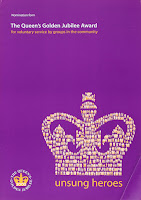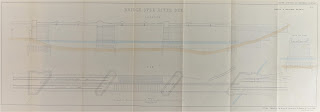On Saturday 10th February, the Proclamation of Accession was read out in the Town Hall Square by the Mayor of Chester, a Guard of Honour was supplied by the Cheshire Regiment who were mounted on the Town Hall steps. After the proclamation, the military band played “God Save the Queen” and the ceremony was brought to an end.
Reports from the newspaper suggest several thousand people were there to witness the proclamation and the mayor ‘led the townspeople in three rousing cheers for her Majesty, Queen Elizabeth II’.
Some parishes even ran special competitions for the best garden and the best decorated house, issuing certificates for the 1st, 2nd and 3rd placed houses.
Children received a gift to celebrate the Coronation, depending on the age of the child these ranged from mugs and sweets to chocolate and propelling pencils. But it wasn’t only the children that received gifts, senior citizens were also included with many receiving a commemorative tea caddy filled with ½ lb of tea.
The Queen has continued to celebrate milestones in her reign, in 1977 she celebrated her Silver Jubilee reigning for 25 years. Similar to the Coronation, events taking place in London were televised to the nation. The Jubilee was celebrated around the world and street parties were organised.
In 2002, the Golden Jubilee was celebrated meaning the Queen had reigned for 50 years. The Jubilee commemorated the monarch’s reign but also celebrated her people and featured 6 key themes including ‘Celebration', 'Giving Thanks', 'Service', 'Involving the Whole Community', 'Looking Forward as Well as Back', and 'Commonwealth'. The Queen’s Award for Voluntary service was created for the Golden Jubilee and is still awarded every year for examples of outstanding voluntary work.
Fast forward another 10 years to 60 years on the throne and the Diamond Jubilee. Only once before has a monarch reached this milestone and that was the Queen’s Great-Great Grandmother, Queen Victoria, who celebrated her Diamond Jubilee in 1897.

















.jpg)























